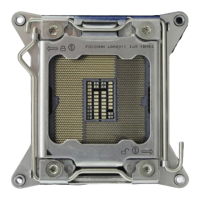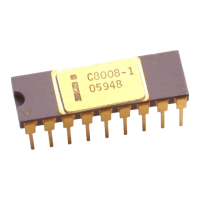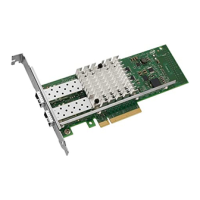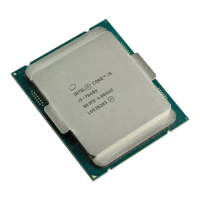Intel® Xeon™ Processor with 800 MHz System Bus
72 Datasheet
specification and affect the long-term reliability of the processor. In addition, a thermal solution
that is significantly under designed may not be capable of cooling the processor even when the
TCC is active continuously. Refer to the appropriate thermal/mechanical design guide for
information on designing a thermal solution.
The duty cycle for the TCC, when activated by the Thermal Monitor, is factory configured and
cannot be modified. The Thermal Monitor does not require any additional hardware, software
drivers, or interrupt handling routines.
6.2.2 On-Demand Mode
The processor provides an auxiliary mechanism that allows system software to force the processor
to reduce its power consumption. This mechanism is referred to as “On-Demand” mode and is
distinct from the Thermal Monitor feature. On-Demand mode is intended as a means to reduce
system level power consumption. Systems using the Intel® Xeon™ processor with 800 MHz
system bus must not rely on software usage of this mechanism to limit the processor temperature.
If bit 4 of the IA-32_CLOCK_MODULATION MSR is written to a ‘1’, the processor will
immediately reduce its power consumption via modulation (starting and stopping) of the internal
core clock, independent of the processor temperature. When using On-Demand mode, the duty
cycle of the clock modulation is programmable via bits 3:1 of the IA-
32_CLOCK_MODULATION MSR. In On-Demand mode, the duty cycle can be programmed
from 12.5% on/ 87.5% off to 87.5% on/12.5% off in 12.5% increments. On-Demand mode may be
used in conjunction with the Thermal Monitor. If the system tries to enable On-Demand mode at
the same time the TCC is engaged, the factory configured duty cycle of the TCC will override the
duty cycle selected by the On-Demand mode.
6.2.3 PROCHOT# Signal Pin
An external signal, PROCHOT# (processor hot) is asserted when the processor die temperature has
reached its factory configured trip point. If Thermal Monitor is enabled (note that Thermal Monitor
must be enabled for the processor to be operating within specification), the TCC will be active
when PROCHOT# is asserted. The processor can be configured to generate an interrupt upon the
assertion or de-assertion of PROCHOT#. Refer to the Intel® Architecture Software Developer’s
Manual(s) for specific register and programming details.
PROCHOT# is designed to assert at or a few degrees higher than maximum T
CASE
(as specified by
Thermal Profile A) when dissipating TDP power, and cannot be interpreted as an indication of
processor case temperature. This temperature delta accounts for processor package, lifetime and
manufacturing variations and attempts to ensure the Thermal Control Circuit is not activated below
maximum T
CASE
when dissipating TDP power. There is no defined or fixed correlation between
the PROCHOT# trip temperature, the case temperature or the thermal diode temperature. Thermal
solutions must be designed to the processor specifications and cannot be adjusted based on
experimental measurements of T
CASE
, PROCHOT#, or Tdiode on random processor samples.
6.2.4 FORCEPR# Signal Pin
The FORCEPR# (force power reduction) input can be used by the platform to cause the Intel®
Xeon™ processor with 800 MHz system bus to activate the TCC. If the Thermal Monitor is
enabled, the TCC will be activated upon the assertion of the FORCEPR# signal. The TCC will
remain active until the system deasserts FORCEPR#. FORCEPR# is an asynchronous input.
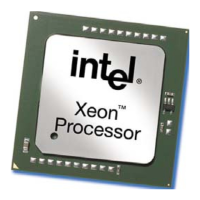
